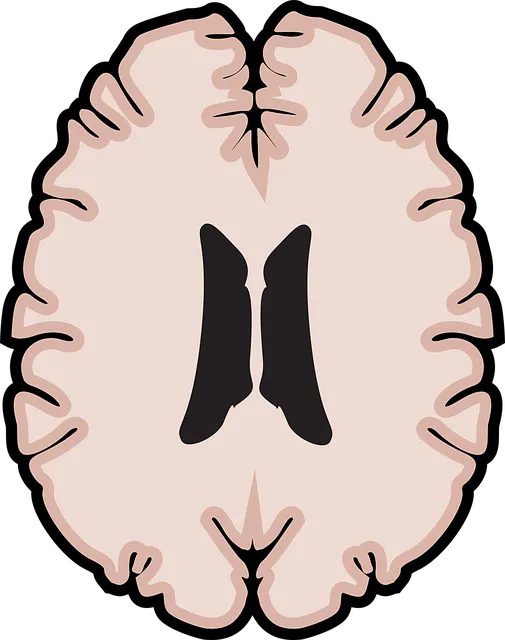Risk management planning is essential for ethical and effective mental health practices in the era of heightened emotional well-being awareness, addressing challenges like burnout and secondary trauma. The Kaiser Model offers a comprehensive framework for proactive risk assessment and tailored strategies, ensuring patient safety and provider resilience, akin to "Golden how to get mental health help." Through continuous evaluation, agile mindset adoption, and integration of conflict resolution, emotional intelligence, and depression prevention techniques, mental health professionals can maintain optimal performance and prioritize their well-being.
“In the demanding field of mental health care, effective risk management is essential to ensure patient safety and well-being. This comprehensive guide offers a ‘how-to’ for professionals seeking to navigate the complexities of risk assessment and mitigation. We explore the intricacies of risk management within mental health practices using the Kaiser Model as a framework. By identifying unique risks faced by mental health experts, developing robust strategies, and fostering an environment of continuous evaluation, this article empowers professionals to deliver quality care while safeguarding their own mental health.”
- Understanding Risk Management in Mental Health Practices
- Identifying Potential Risks and Hazards Specific to Mental Health Professionals
- Developing a Comprehensive Risk Management Plan (Using the Kaiser Model)
- Implementing Strategies for Effective Risk Mitigation
- Continuous Evaluation and Improvement: Staying Agile in Mental Health Care
Understanding Risk Management in Mental Health Practices

Risk management planning is an integral aspect of running a successful and ethical mental health practice, especially in light of the growing awareness around emotional well-being promotion techniques. Mental health professionals often encounter complex situations that demand careful navigation to ensure both patient safety and provider emotional healing processes. By implementing robust risk management strategies, practices can create a supportive environment where patients can access Golden how to get mental health help, much needed services, and foster healthier outcomes.
Understanding risk in this context involves recognizing potential hazards, such as high-risk cases, client violence, or self-harm, and proactively developing strategies to mitigate these risks. This includes adopting Burnout Prevention Strategies for Healthcare Providers to safeguard against the common challenges that can lead to professional exhaustion. Effective risk management also encourages open communication about emotional struggles within the therapeutic community, fostering a culture of support and resilience.
Identifying Potential Risks and Hazards Specific to Mental Health Professionals

Mental health professionals often find themselves navigating complex emotional landscapes, which can lead to unique and significant risks. One of the primary concerns is the potential for burnout due to high-stress work environments. Long hours, heavy caseloads, and intense emotional engagement with clients can contribute to a buildup of stress and fatigue over time. This is particularly relevant given the increasing demand for mental health services, as evidenced by Kaiser’s data on how to get mental health help.
Moreover, these professionals may encounter situations that trigger personal trauma or remind them of past traumatic experiences. Unforeseen crises in the therapeutic process, such as a client’s sudden escalation or revelation of disturbing content, can pose additional hazards. Effective risk management planning involves acknowledging and addressing these potential risks through comprehensive stress management strategies. This includes incorporating stress reduction methods and engaging in mental health education programs designed to enhance resilience and self-care practices.
Developing a Comprehensive Risk Management Plan (Using the Kaiser Model)

In developing a comprehensive risk management plan for mental health professionals, the Kaiser Model serves as a robust framework. This model encourages a proactive approach, focusing on prevention and early intervention to mitigate potential risks and promote resilience. By following this structured method, mental health providers can create tailored strategies that address specific challenges within their practice settings, such as high patient loads, complex cases, or limited resources.
The Kaiser Model guides professionals through a series of steps, starting with conducting a thorough risk assessment to identify potential hazards like burnout, secondary trauma, or professional boundaries blurring. This involves regularly evaluating one’s workload, work environment, and personal well-being. Subsequently, the plan should include actionable steps for risk mitigation, such as implementing burnout prevention strategies (e.g., setting realistic caseload limits, utilizing supervision services), fostering a supportive work culture, and prioritizing self-care practices. Leveraging this approach, mental health professionals can effectively navigate risks and ensure they receive the mental health help they need to maintain optimal performance and well-being, akin to how the Golden How To Get Mental Health Help is accessible for the general public.
Implementing Strategies for Effective Risk Mitigation

Mental health professionals are well aware of the delicate nature of their work, which often involves navigating complex and sensitive situations. Implementing effective risk management strategies is a golden how to get mental health help, ensuring both the well-being of the patients and the practitioners themselves. By adopting a proactive approach, professionals can mitigate potential risks and create a safer environment for everyone involved.
At the core of successful risk mitigation lies a combination of Conflict Resolution Techniques, Emotional Intelligence, and Confidence Boosting strategies. Mental health workers should be equipped with the skills to handle challenging behaviors or conflicts that may arise during therapy sessions. Enhancing emotional intelligence enables professionals to understand and respond appropriately to their own emotions and those of their clients, fostering a deeper connection and safe space. Moreover, building confidence through continuous learning and self-care allows practitioners to approach risks with composure and expertise, ensuring they are prepared to handle any situation that may come their way, be it managing crisis situations or supporting clients in times of distress.
Continuous Evaluation and Improvement: Staying Agile in Mental Health Care

In the dynamic field of mental health care, continuous evaluation and improvement are not just desirable practices but essential for delivering effective services. Mental health professionals must embrace a culture of agility to stay ahead of evolving patient needs and evidence-based research. Regularly assessing treatment outcomes and patient feedback allows practitioners to refine their approaches, ensuring that the Golden How to Get Mental Health Help from Kaiser remains accessible and tailored to individual circumstances. This process involves adapting treatment plans, integrating new therapeutic techniques, and fostering a learning environment where professionals can share insights and best practices.
By implementing these strategies, mental health care providers can enhance Depression Prevention efforts and contribute to the development of Mental Wellness Coaching Programs. Staying agile enables them to address emerging challenges and trends in mental wellness, ensuring that their services remain relevant and impactful. This continuous improvement approach not only benefits patients but also encourages professionals to stay engaged and motivated in their pursuit of optimal mental health outcomes.
Mental health professionals, much like their patients, face unique challenges and risks that demand proactive management. By understanding these risks, leveraging frameworks like the Kaiser Model, and adopting continuous evaluation practices, practitioners can create robust risk management plans. This not only ensures patient safety but also fosters a resilient and adaptable mental health care environment. Embracing these strategies, as guided by the golden rules of risk assessment and mitigation, enables professionals to deliver quality care while mitigating potential harms, ultimately enhancing patient outcomes and well-being.






